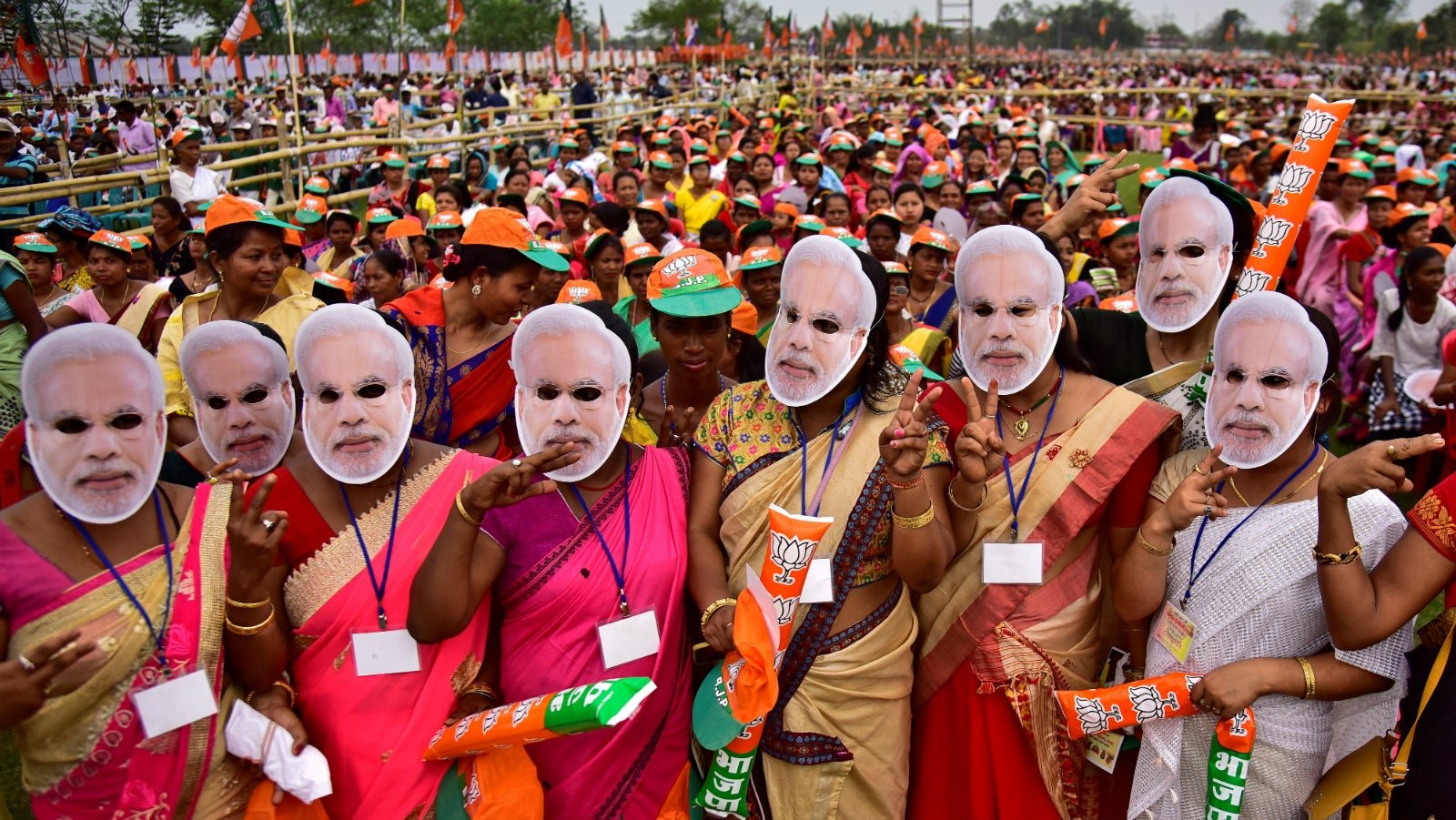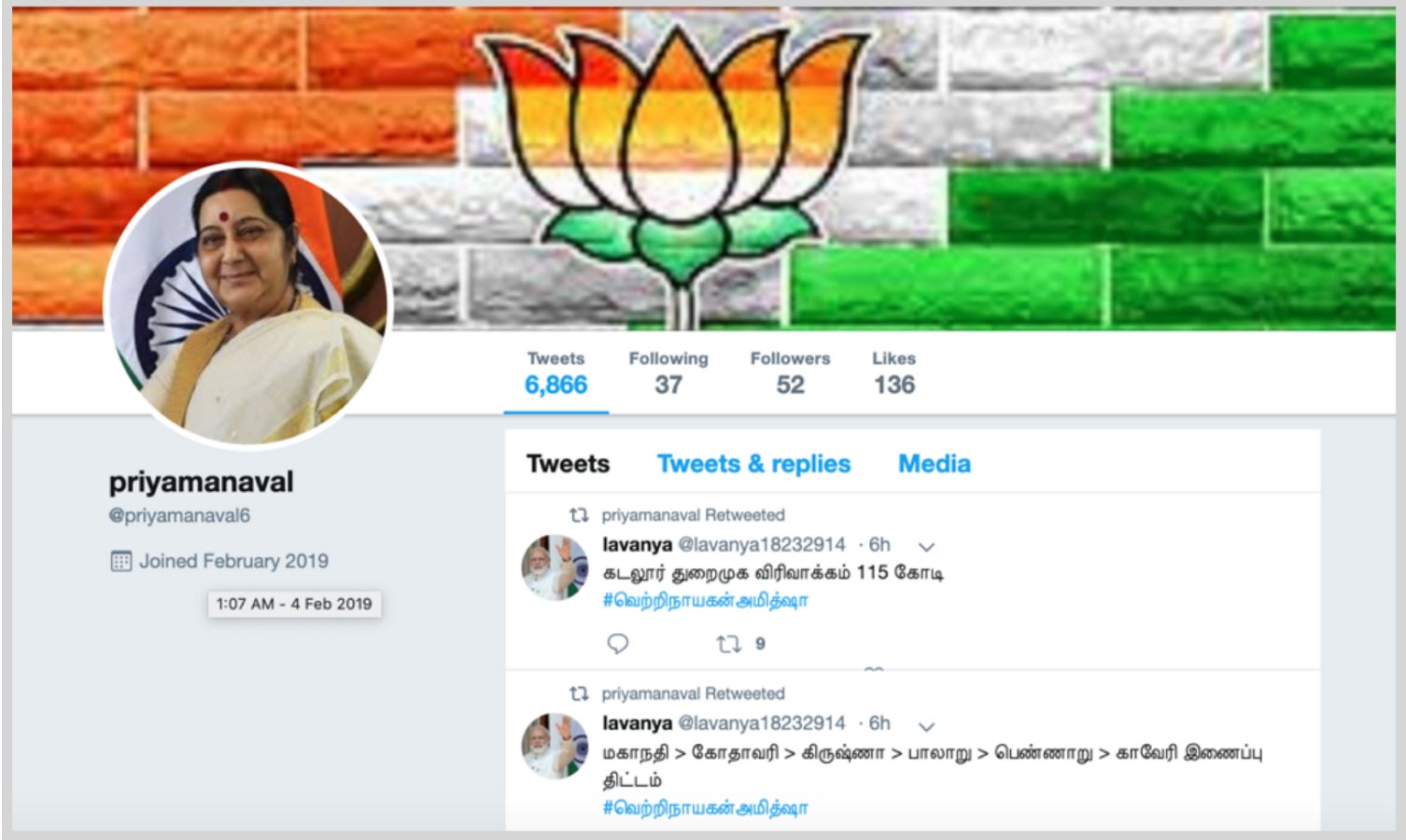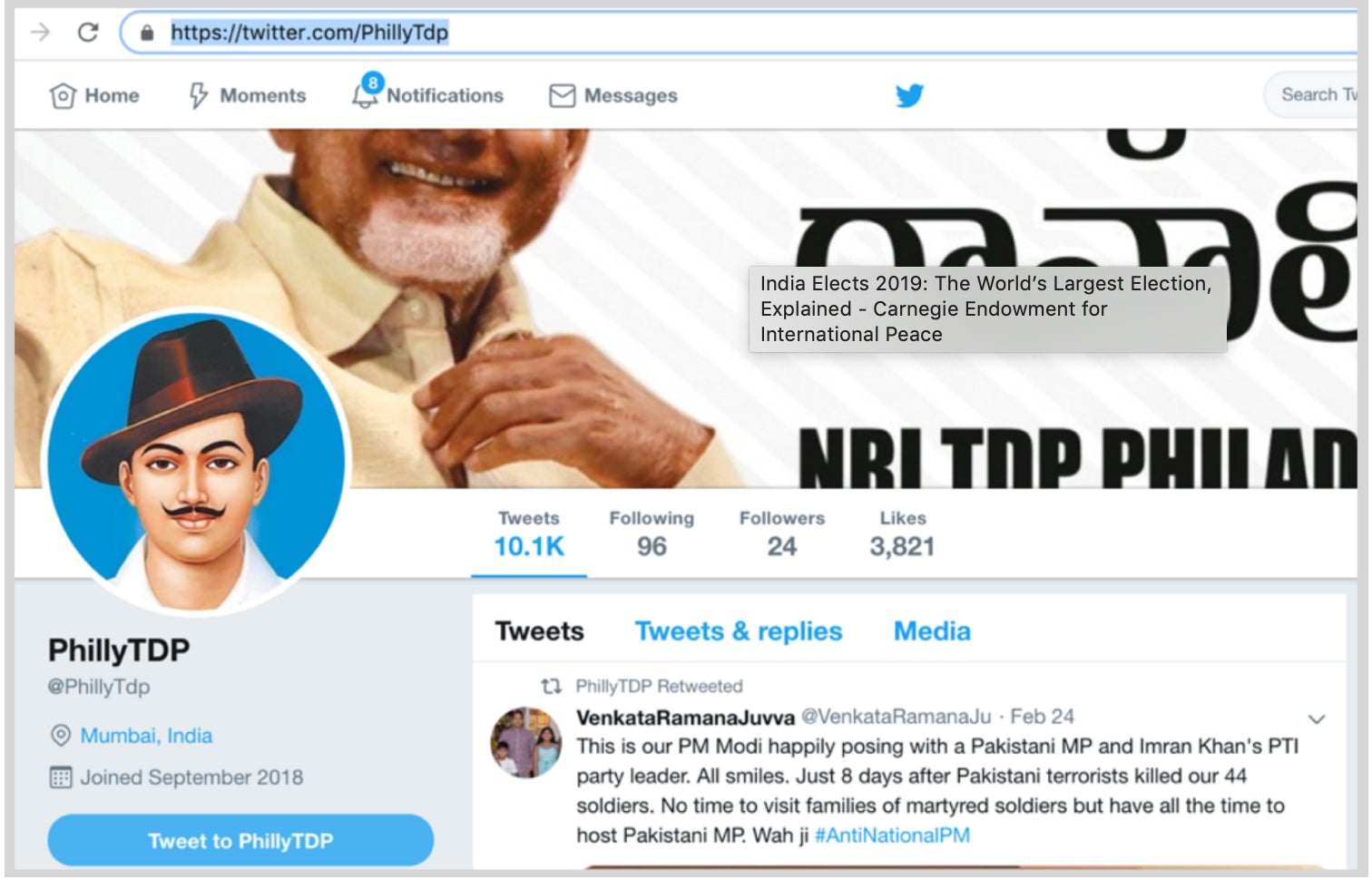Pro-Modi Twitter bots manipulated a hashtag at a record-breaking rate
In February, two duelling hashtags—one in support of Indian prime minister Narendra Modi and one opposing him—used bots to boost their messaging. The overall traffic driving both hashtags was heavily automated, finds a report by the Atlantic Council’s Digital Forensic Research Lab (DFR Lab), but the pro-Modi hashtag far more so.


In February, two duelling hashtags—one in support of Indian prime minister Narendra Modi and one opposing him—used bots to boost their messaging. The overall traffic driving both hashtags was heavily automated, finds a report by the Atlantic Council’s Digital Forensic Research Lab (DFR Lab), but the pro-Modi hashtag far more so.
In fact, the pro-Modi traffic even showed a record-breaking level of automation, according to a method the US think-tank uses to quantify traffic manipulation.
The two hashtags were #GoBackModi and #TNwelcomesModi. “TN” in the latter stands for Tamil Nadu, a southern Indian state, in which Modi’s Bharatiya Janata Party (BJP) does not have a particularly strong base. The bots, tweeting to herald Modi’s visit to the state, attempted to manipulate traffic on Feb. 09 and Feb. 10.
#TNwelcomesModi was mentioned over 777,000 times over both days, during which it trended in India. DFR Lab analysed almost 50,000 of these tweets, which covered a span of almost eight hours of traffic. The analysis revealed that the hashtag was “heavily manipulated by a very small group”—over 60% of its traffic was contributed by the 50 most active accounts.
One such bot account, with the handle @priyamanaval6, for example, was created a few days prior to the TN visit, and tweeted around once every 17 seconds. This account, and the others amplifying the #TNwelcomesModi hashtag, have since been suspended.
The account contains many hallmarks of bots: it uses the photo of a famous person as its profile picture, it has very few followers, and its account was created quite soon before it began promoting a particular hashtag.

The other hashtag, #GoBackModi, which was tweeted 447,000 times on Feb. 09 and 10, and often promoted the opposition Indian National Congress, was also found to be pushed by a small group of automated accounts. This seemed like a counter to the pro-Modi hashtag, and it trended as well in India, albeit not until Feb. 10.
One of the bot accounts promoting #GoBackModi, DFR Lab found, tweeted every 5.3 seconds for more than three hours on Feb. 10.

Like the above account, many of the ones pushing #GoBackModi “were even more prolific than their pro-BJP rivals,” DFR Lab says. “Overall, however, the scan of #GoBackModi revealed a larger number of lower-activity accounts.”
A shattered record
DFR Lab uses a metric called “coefficient of traffic manipulation” (CTM) to quantify how manipulated a hashtag is. CTM, the theory of which was first published in an Oxford Internet Institute paper by DFR Lab senior fellow Ben Nimmo, is calculated using a formula that takes into account the percentage of traffic from retweets, percentage from the 50 most active accounts, and the average number of posts per user.
A CTM value of less than 12 is generally common for non-manipulated traffic. Both Indian hashtags studied here, however, scored far beyond that—with #GoBackModi at 47.05 and #TNwelcomesModi at a staggering 123.98. This makes the latter hashtag “far more heavily manipulated than any large-scale traffic flow the DFRLab has analysed as of yet,” the report says.
Political implications
While the level of automation driving both hashtags was high, the impact they had was likely rather low, since the bot accounts had very few followers. But even still, according to DFR Lab, tactics like this attempted Twitter manipulation may spell trouble for online debate in India.
Social media platforms are major battlegrounds for political parties, though Facebook and WhatsApp, which have far less elite Indian user bases than Twitter, remain far more important.
Still, bots on Twitter are worth talking about as they indicate a willingness of political actors—official or unofficial—to use inauthentic means as a social media boost. Shivam Shankar Singh, who worked in data analytics for the BJP prior to quitting last year, had told Quartz that employees for the BJP “IT cell,” or social media team, often “control around 50 to 100 different Twitter accounts”—bots that they manage on tools that allow them to coordinate messaging en masse.